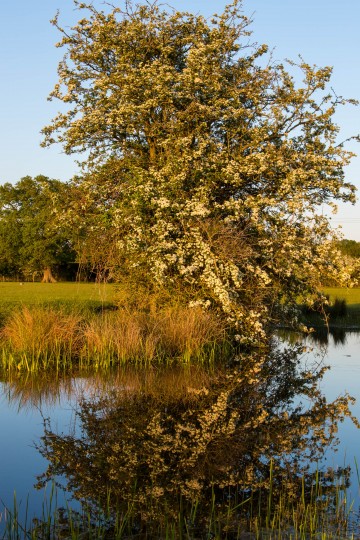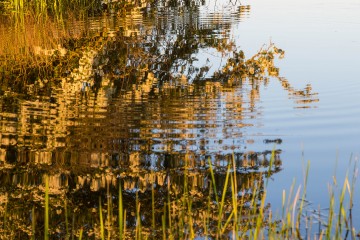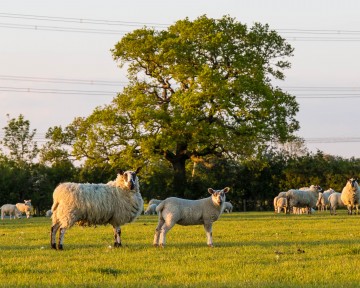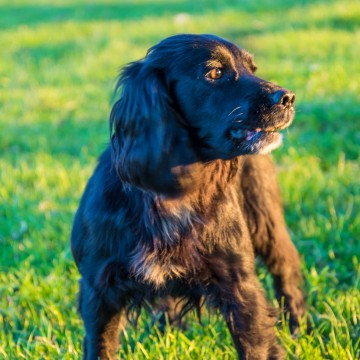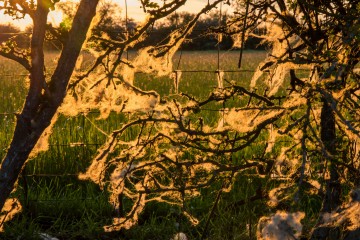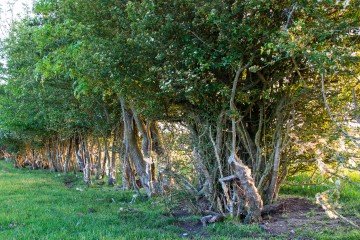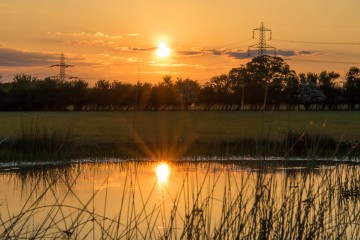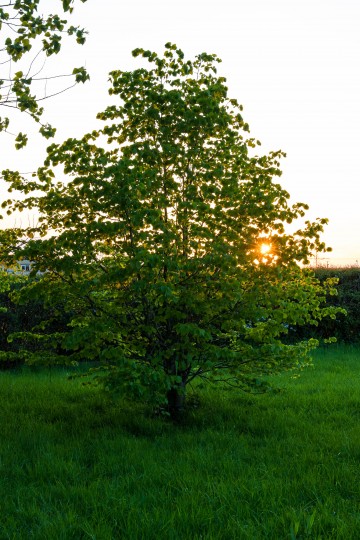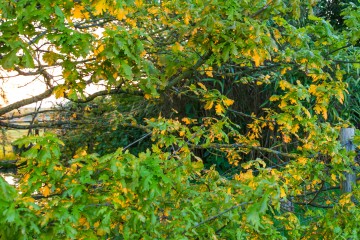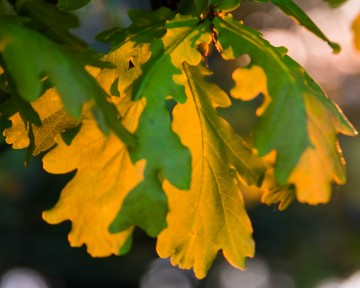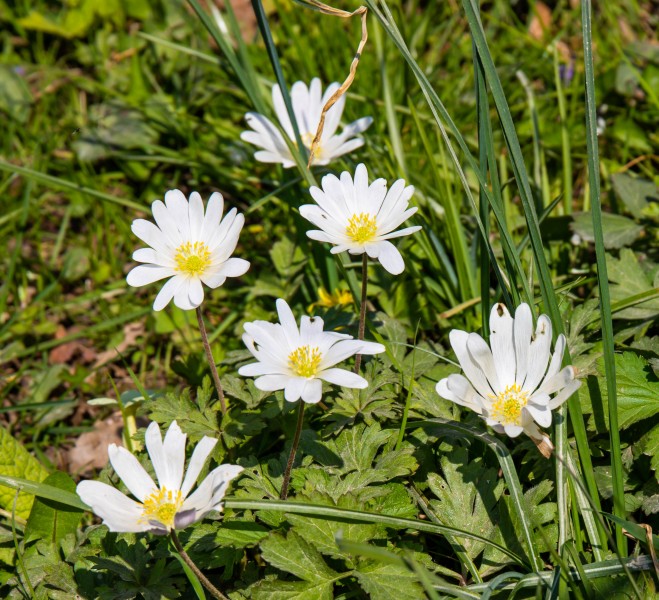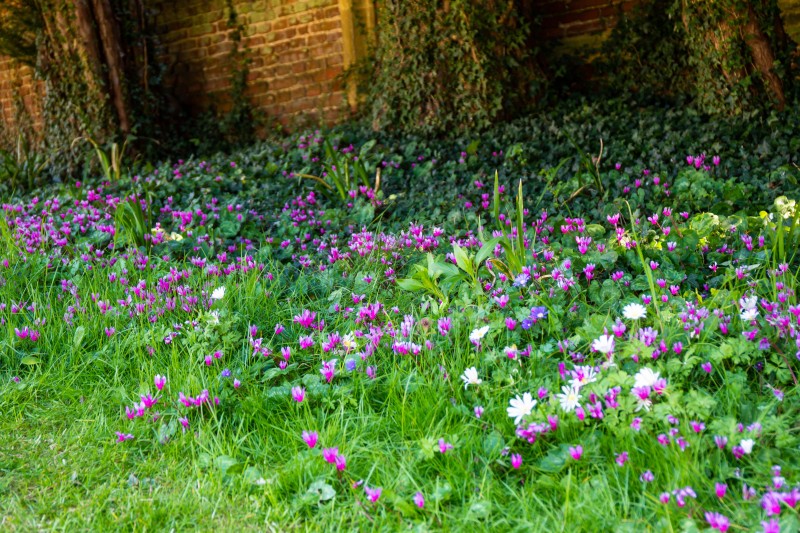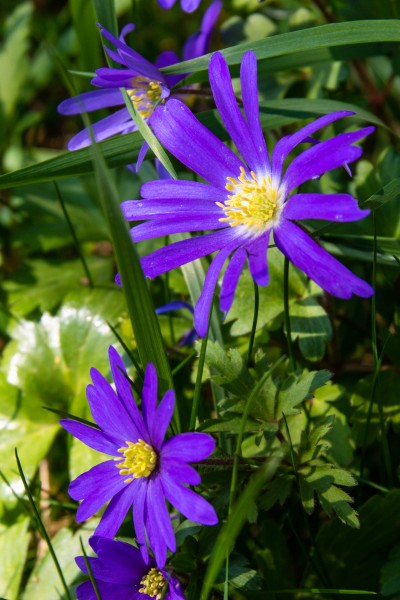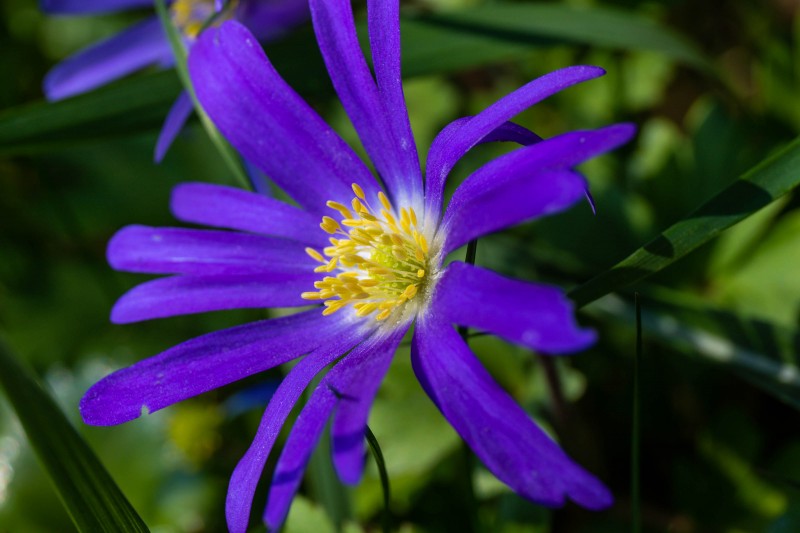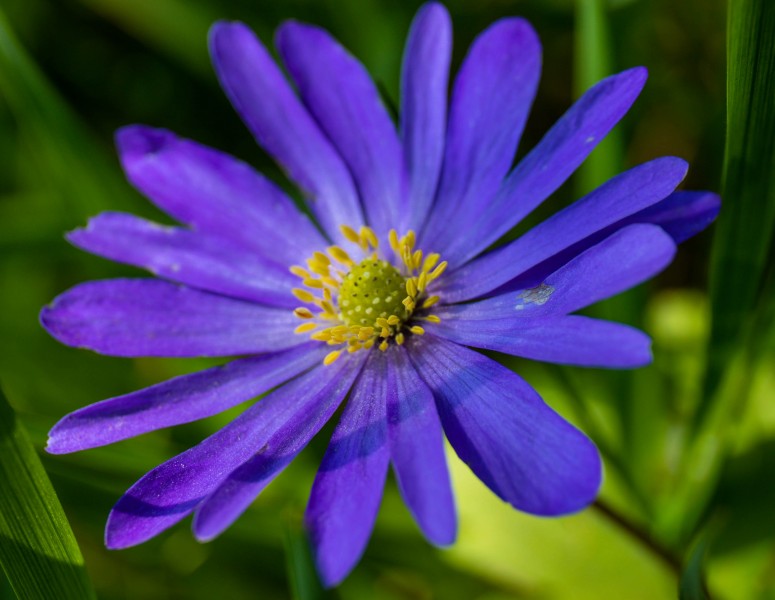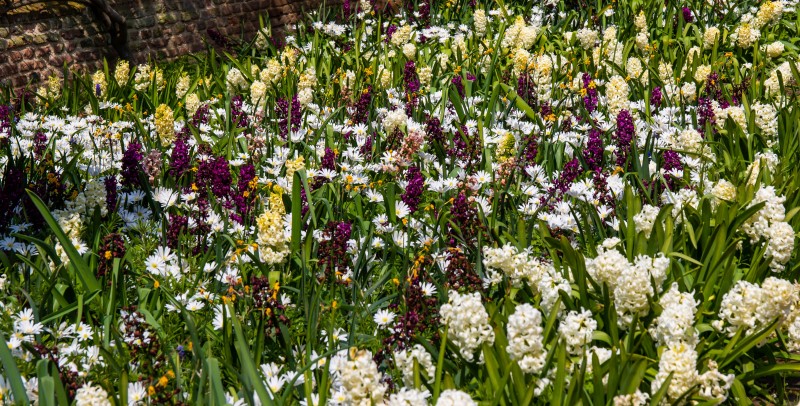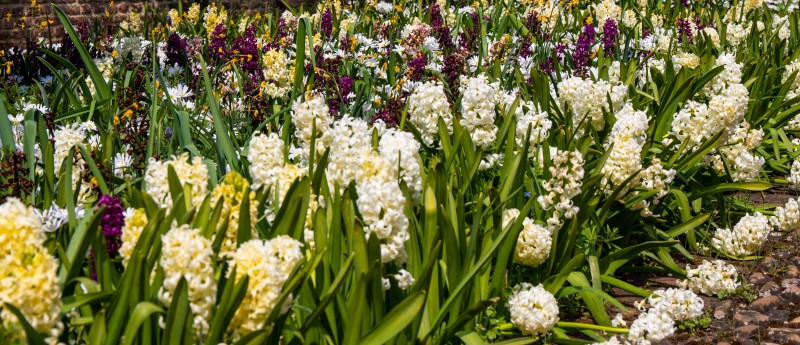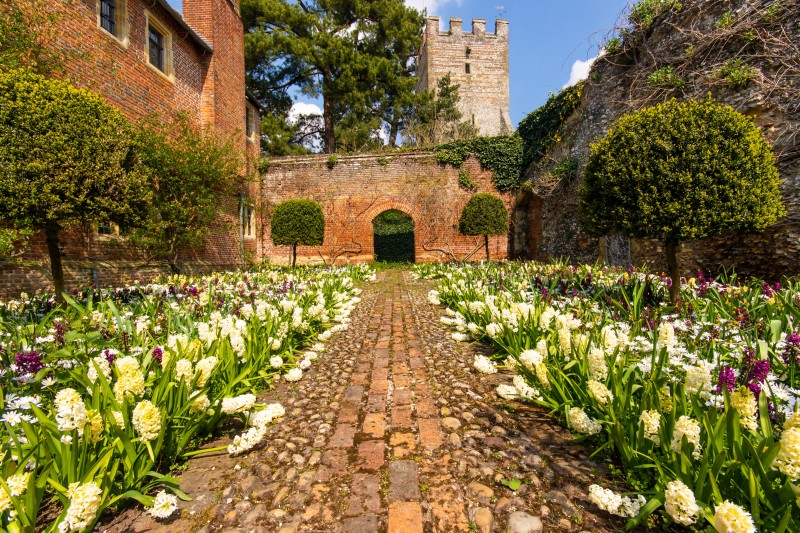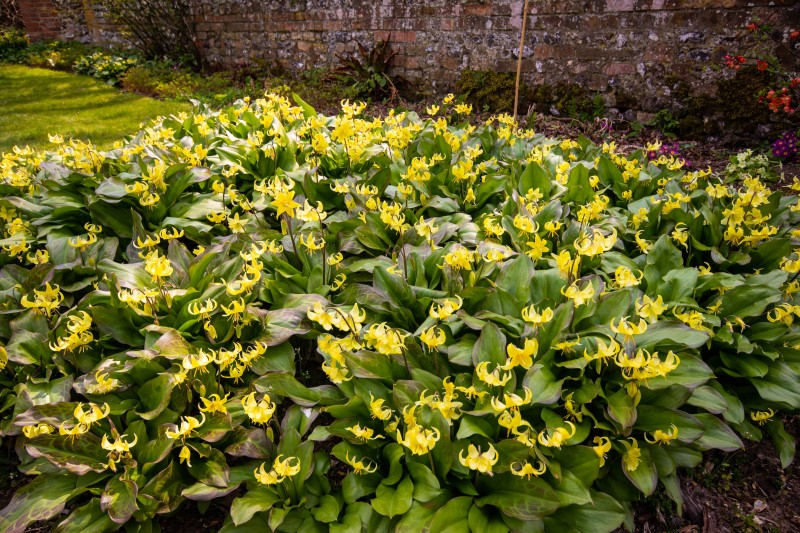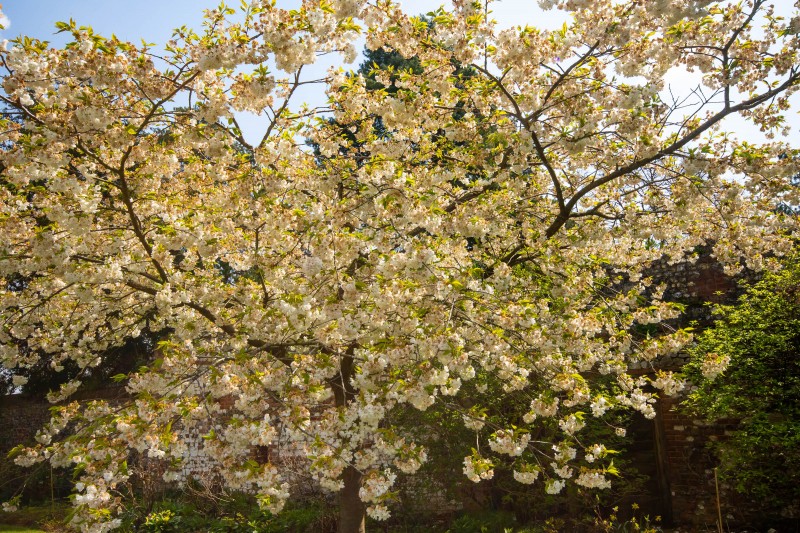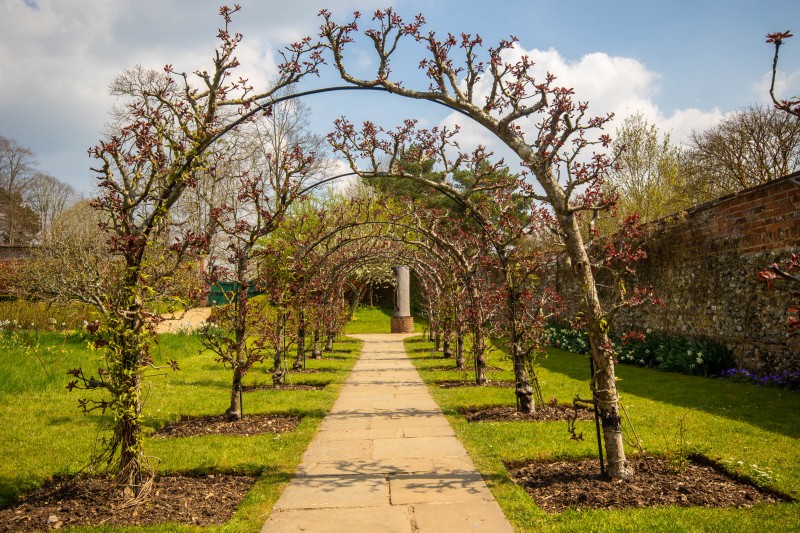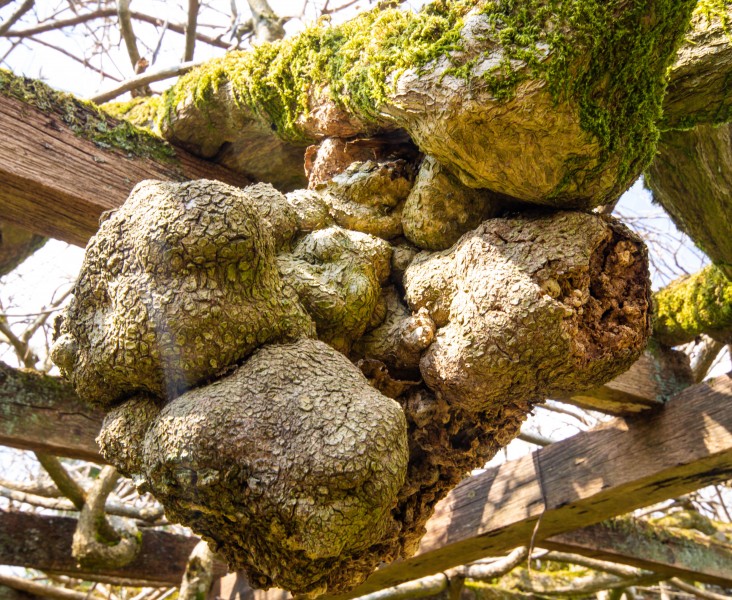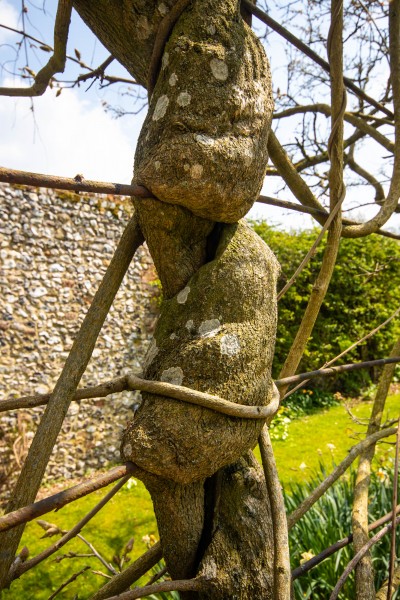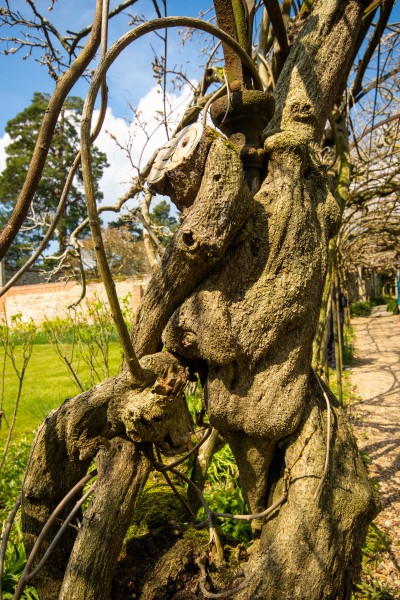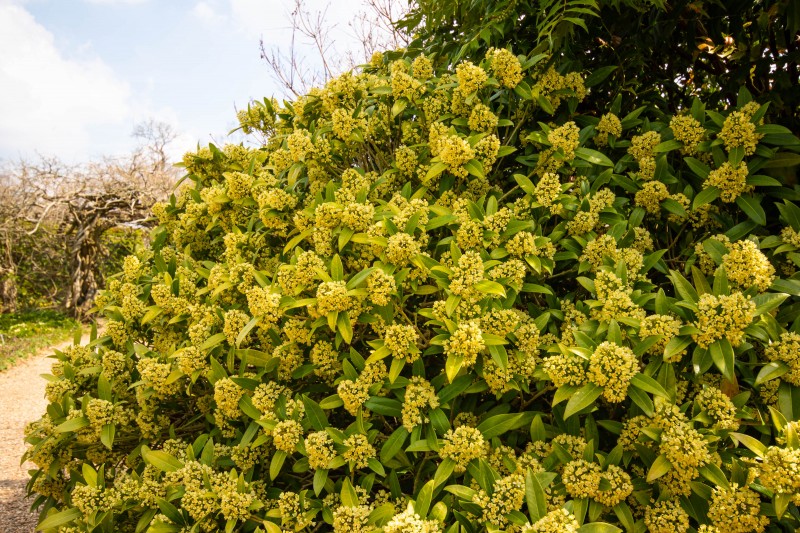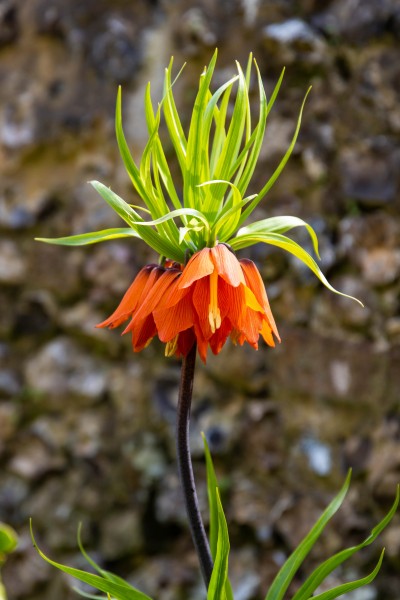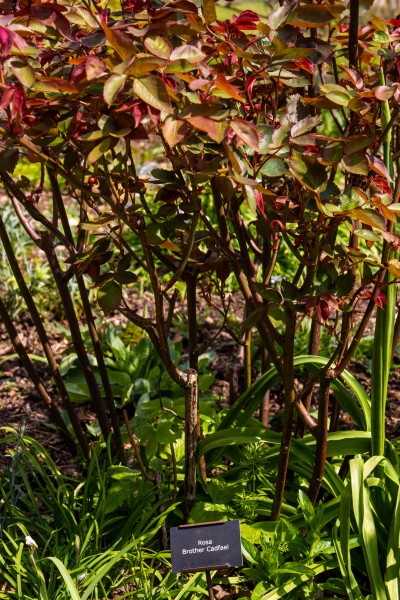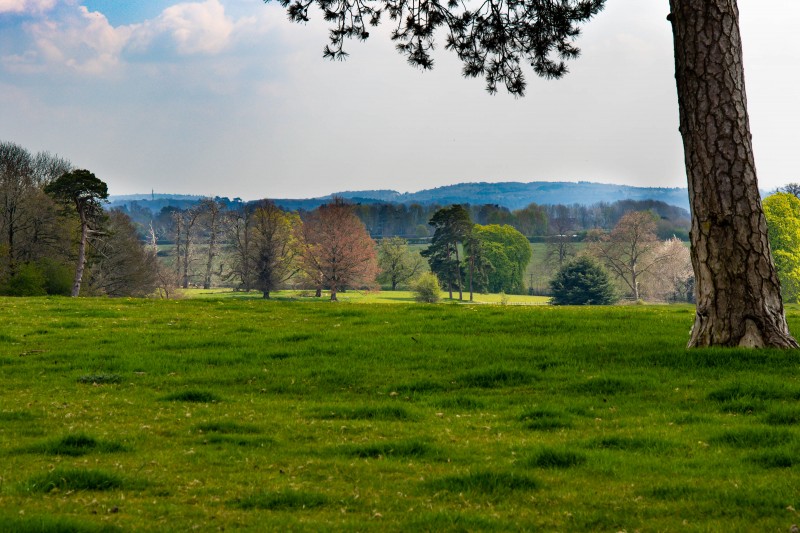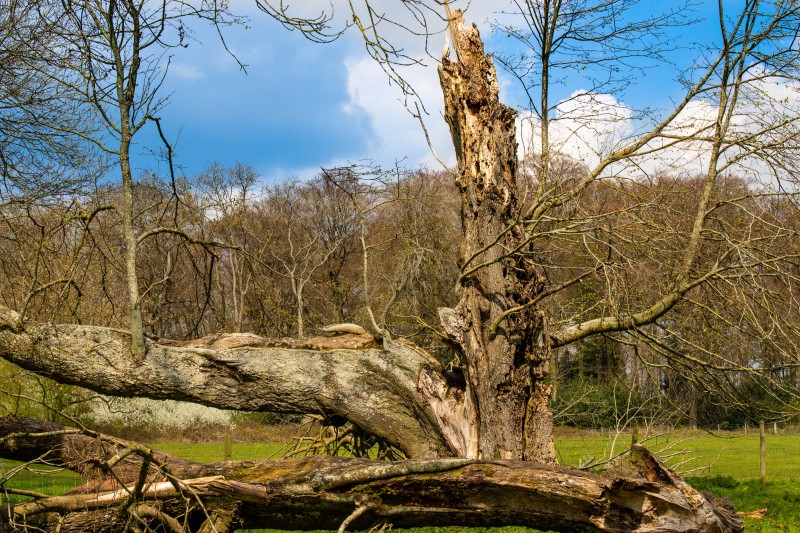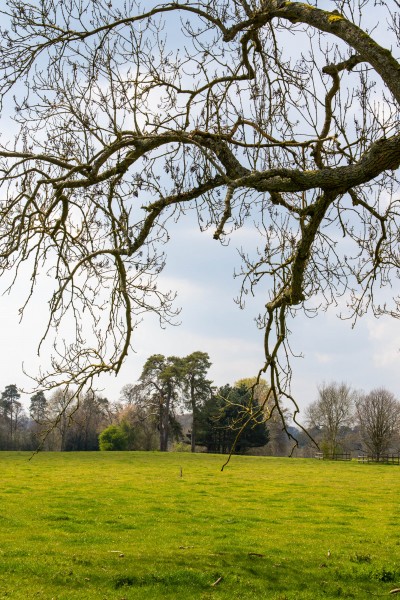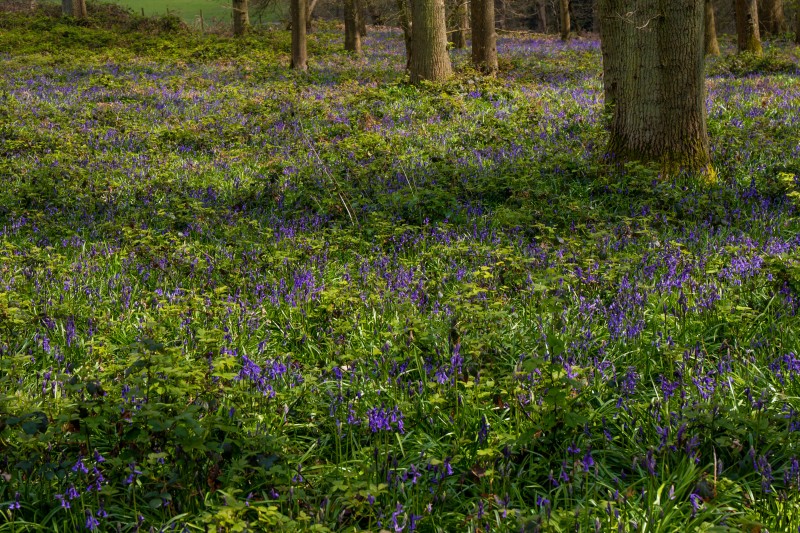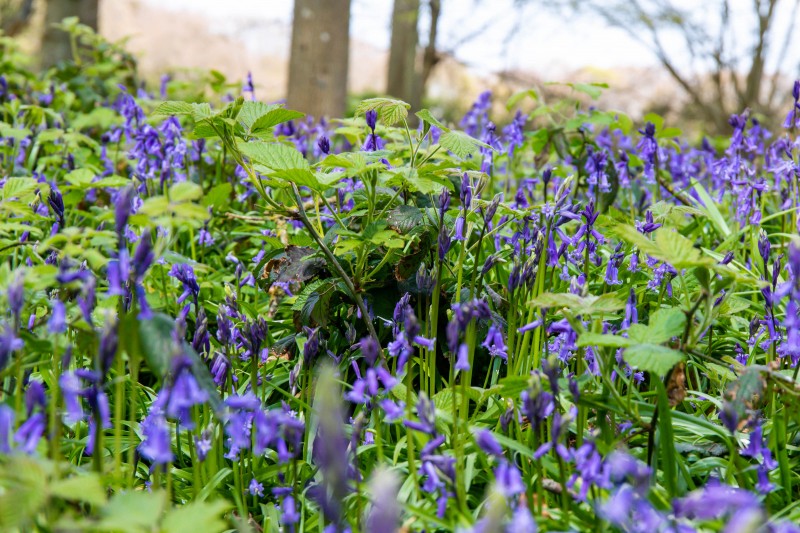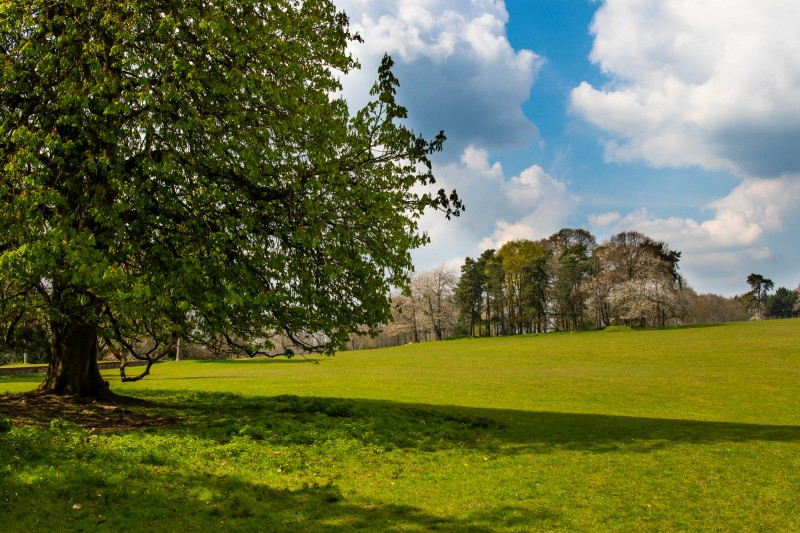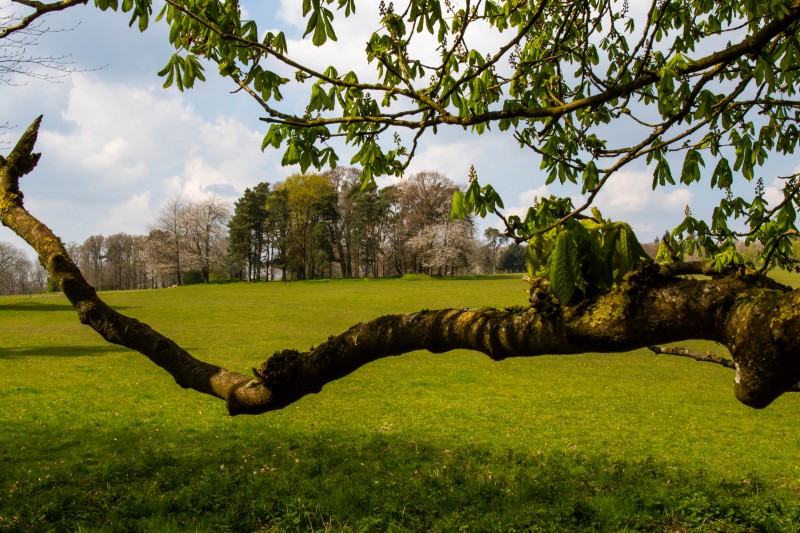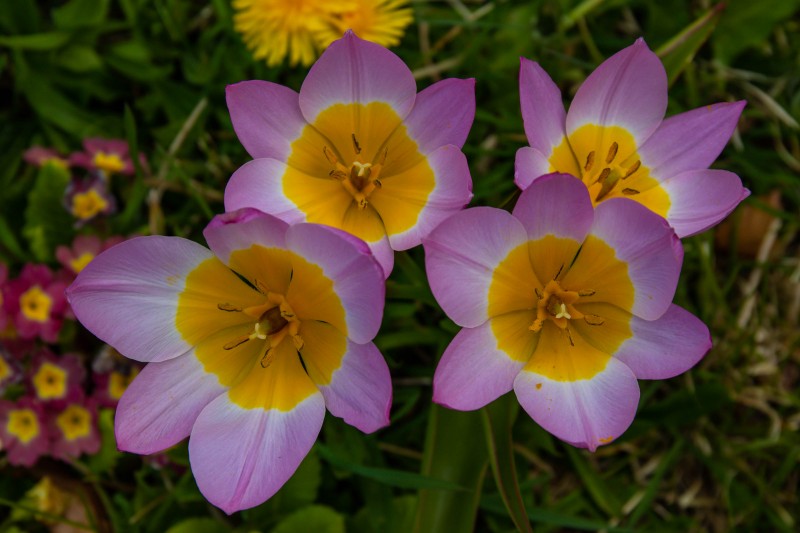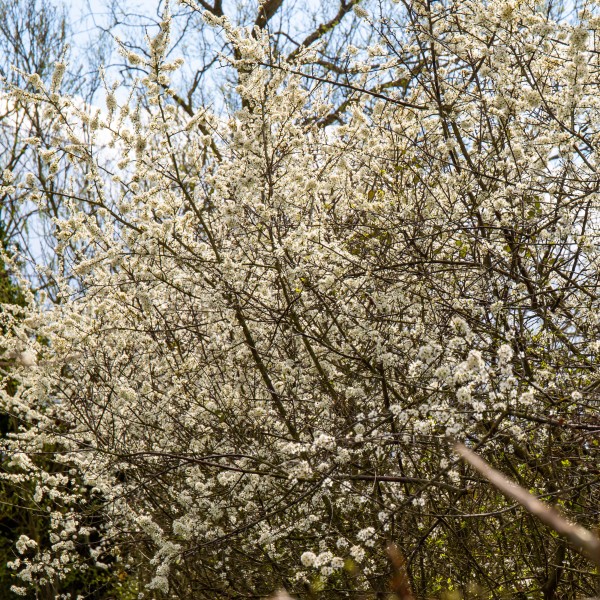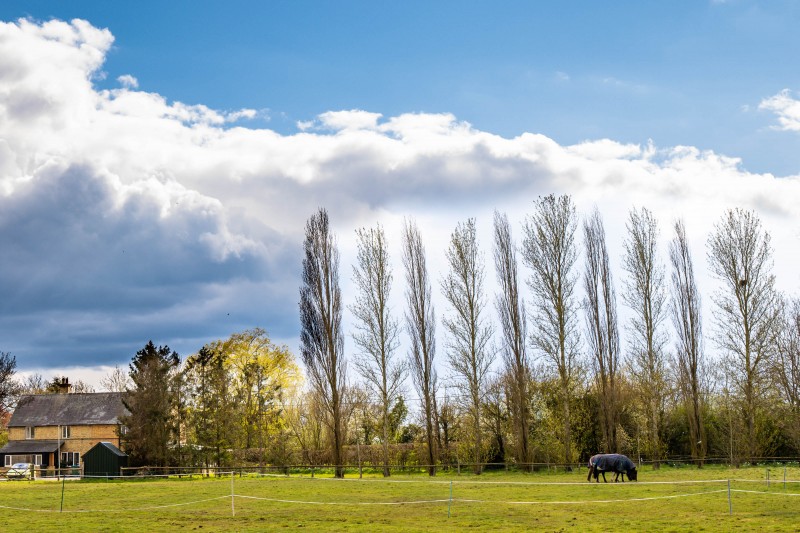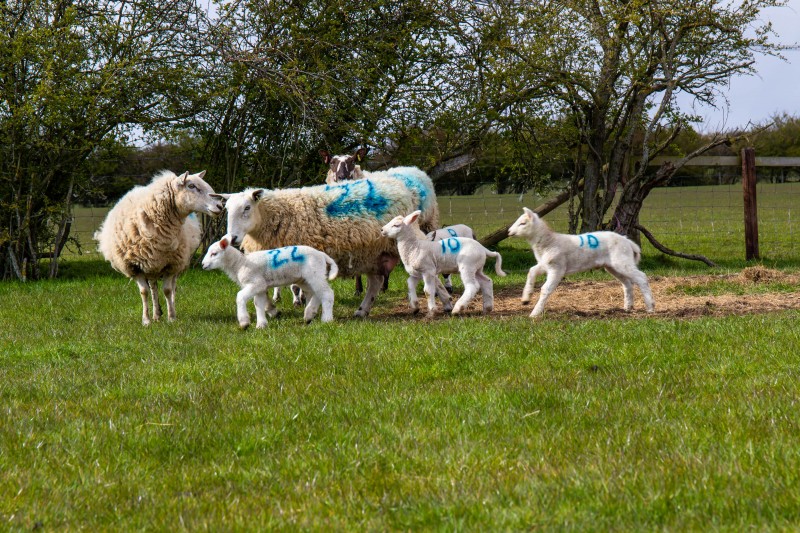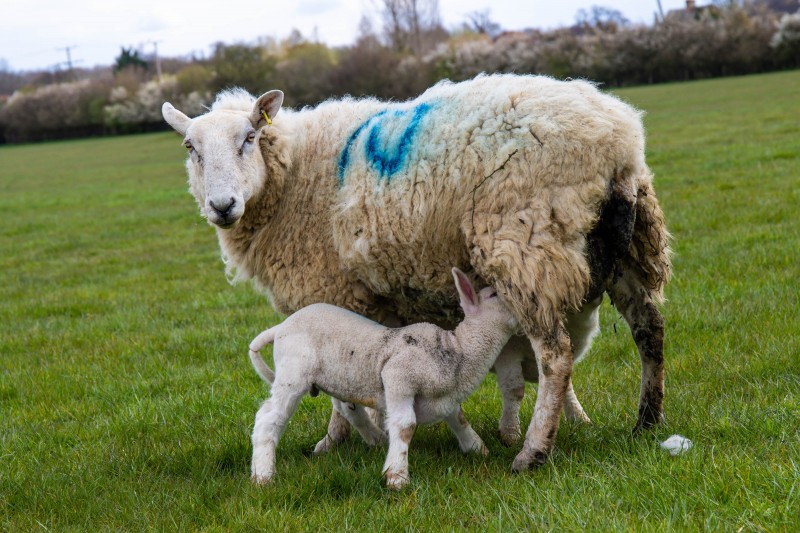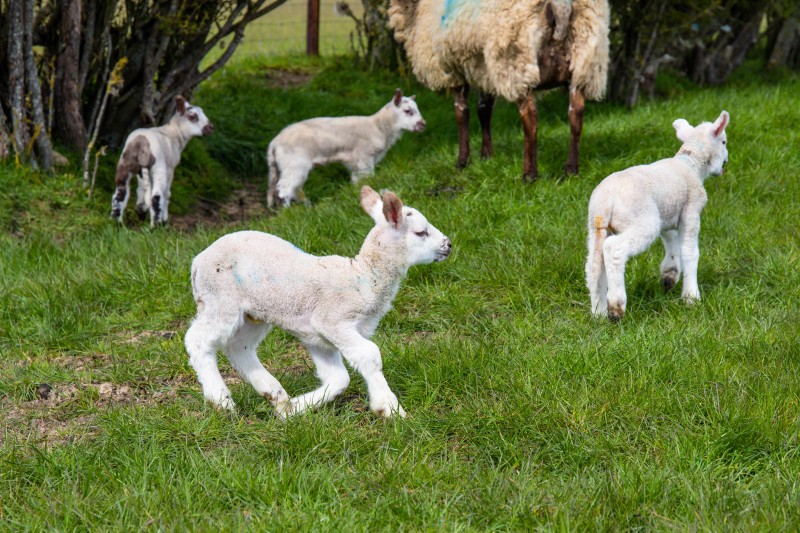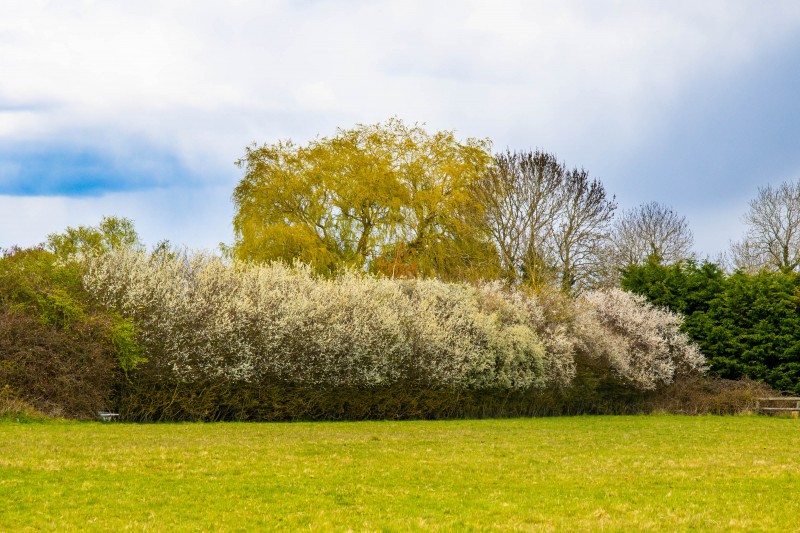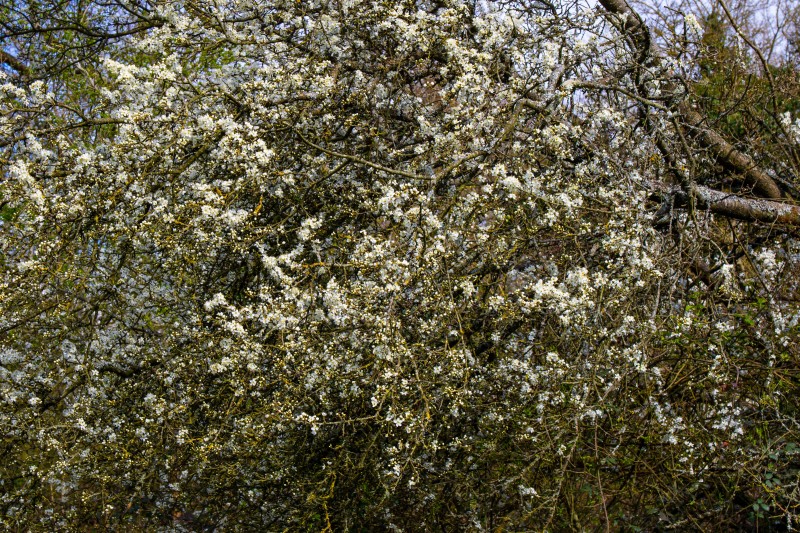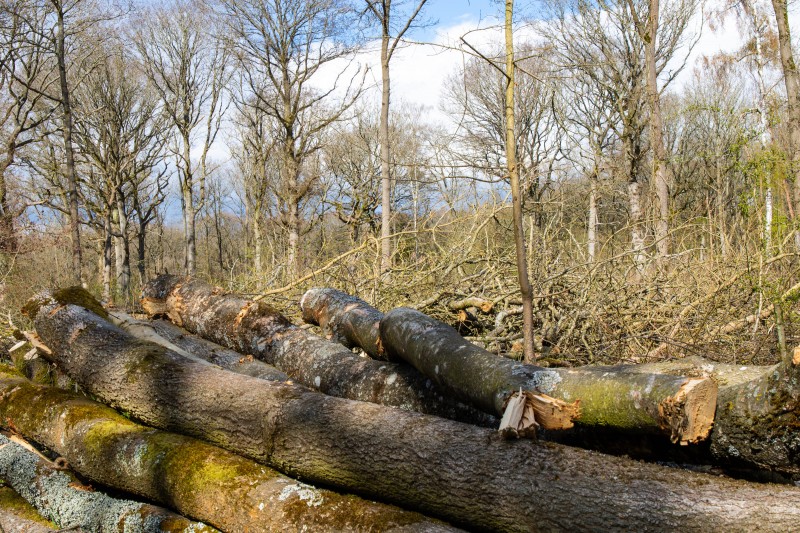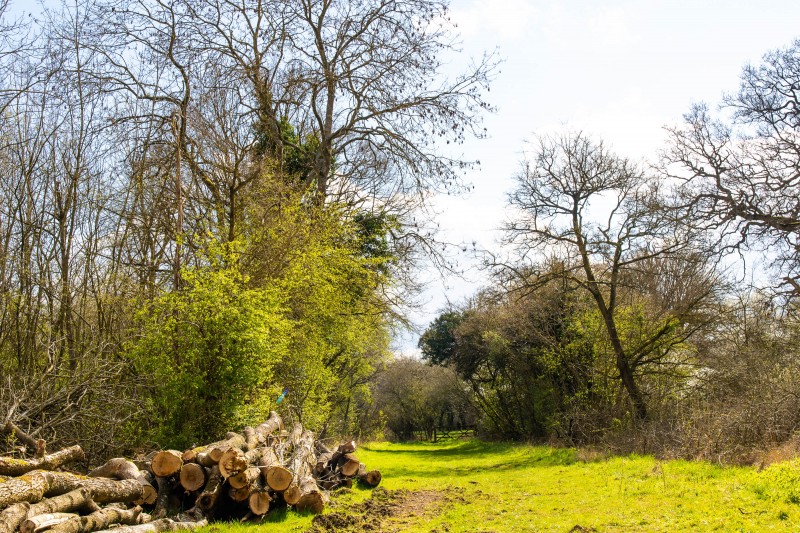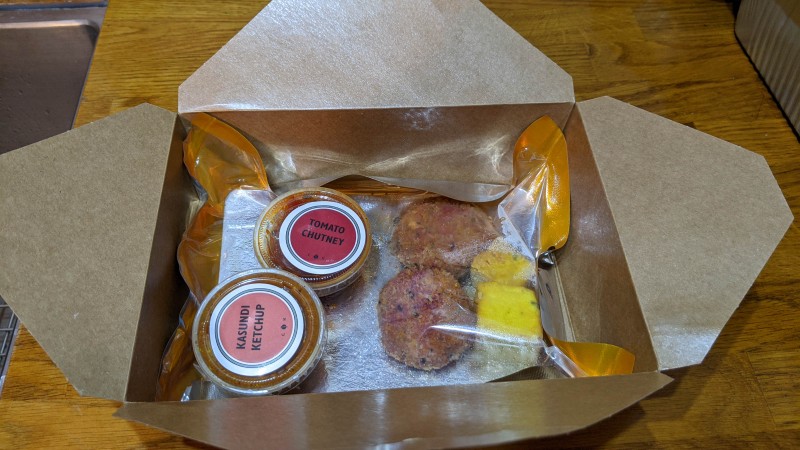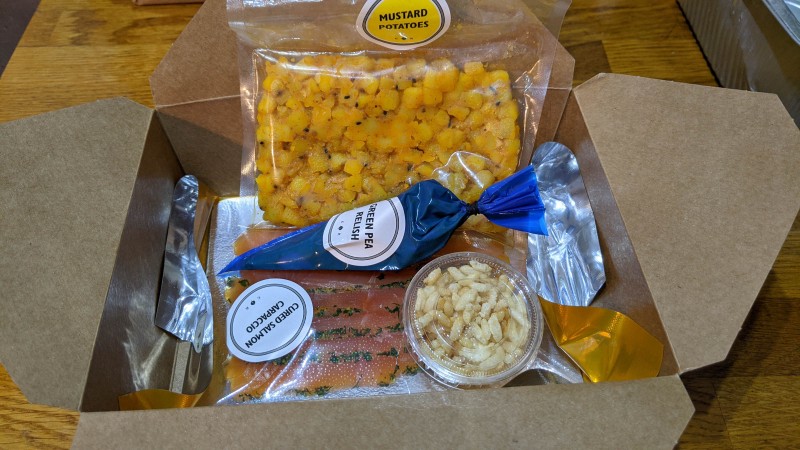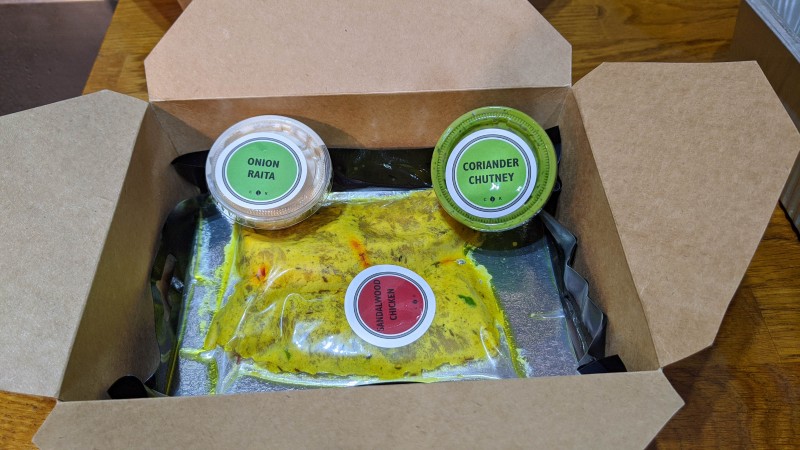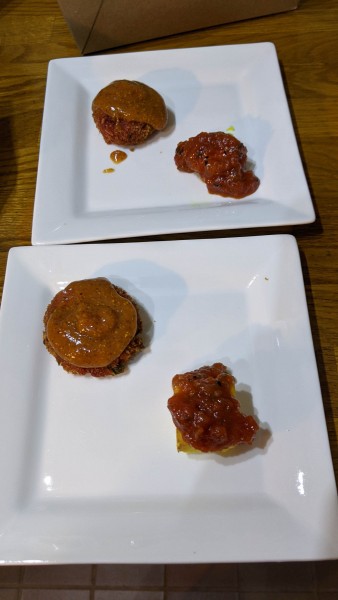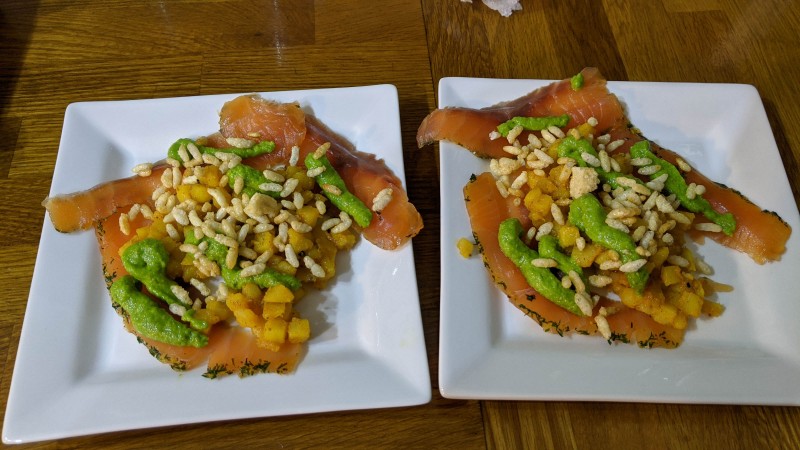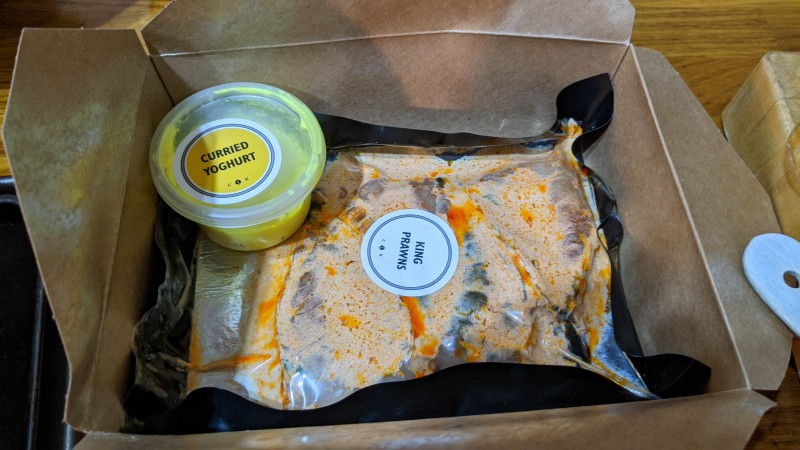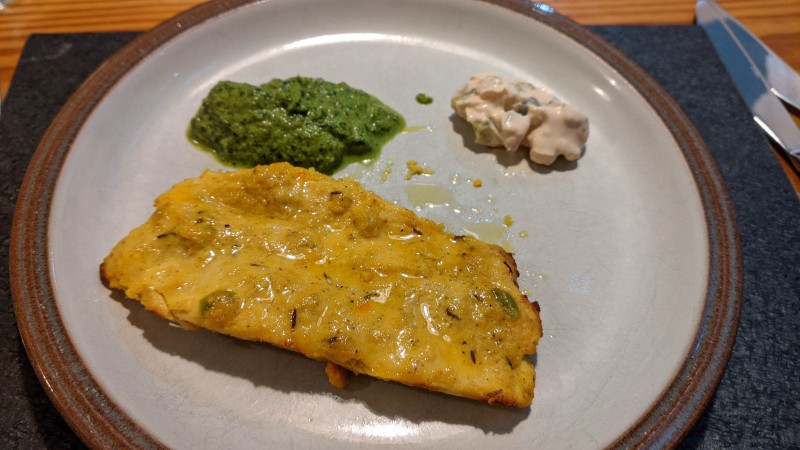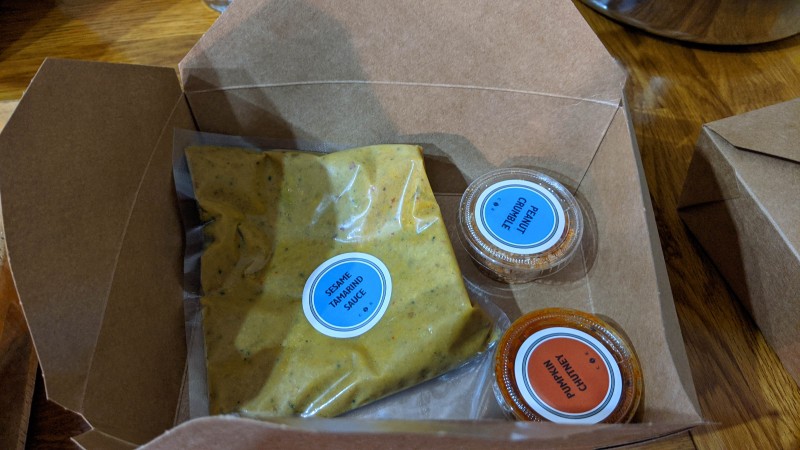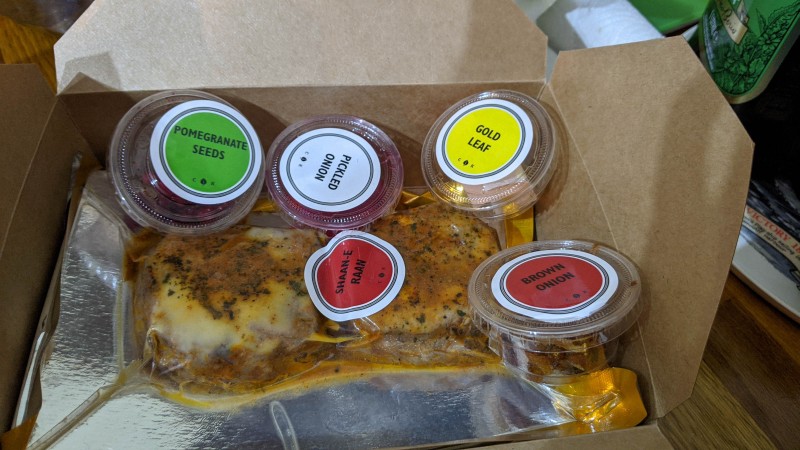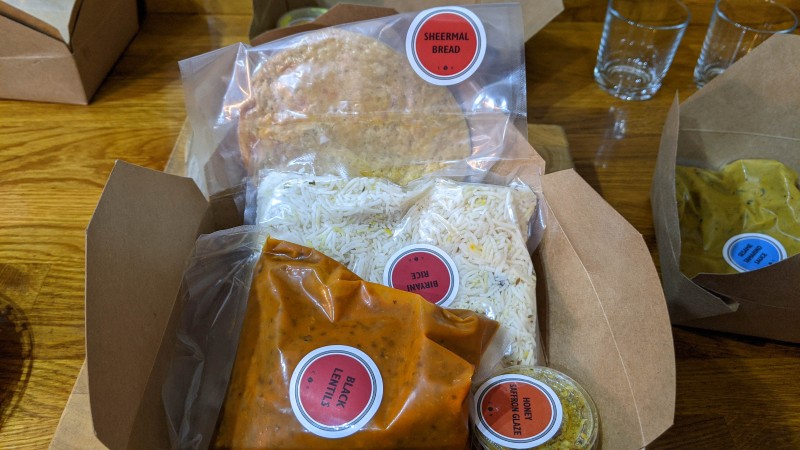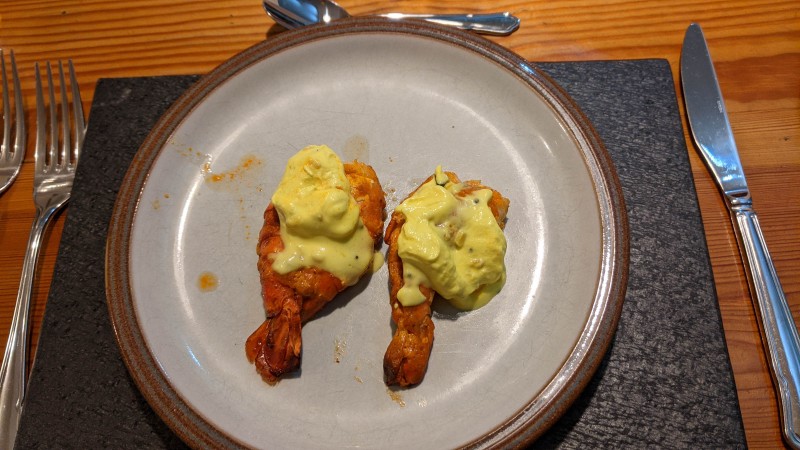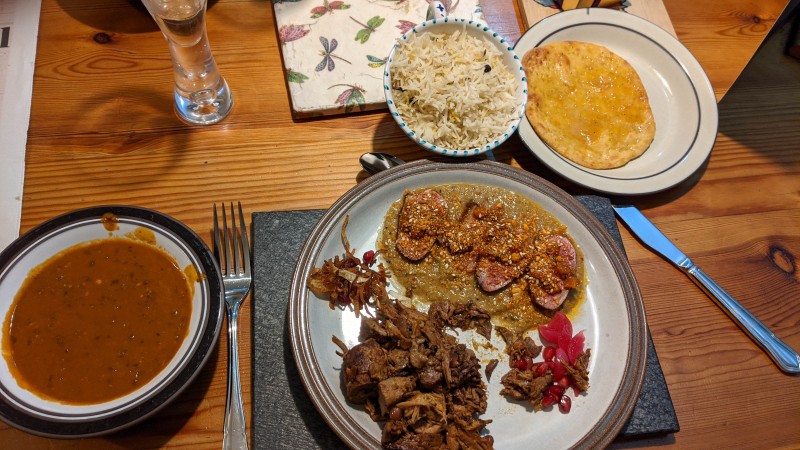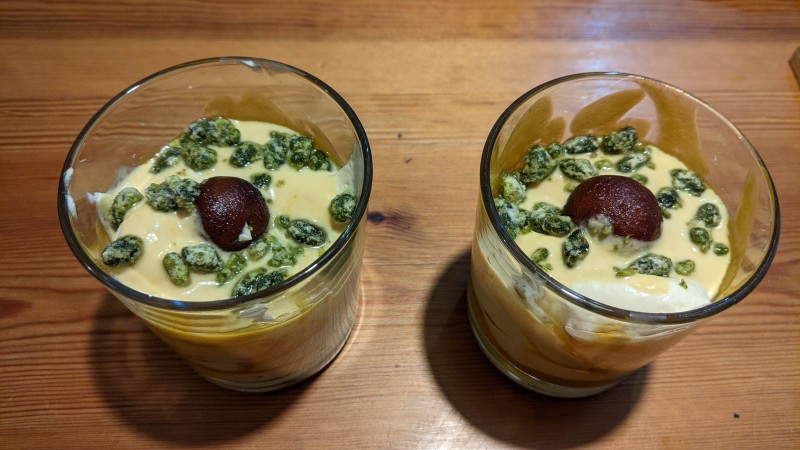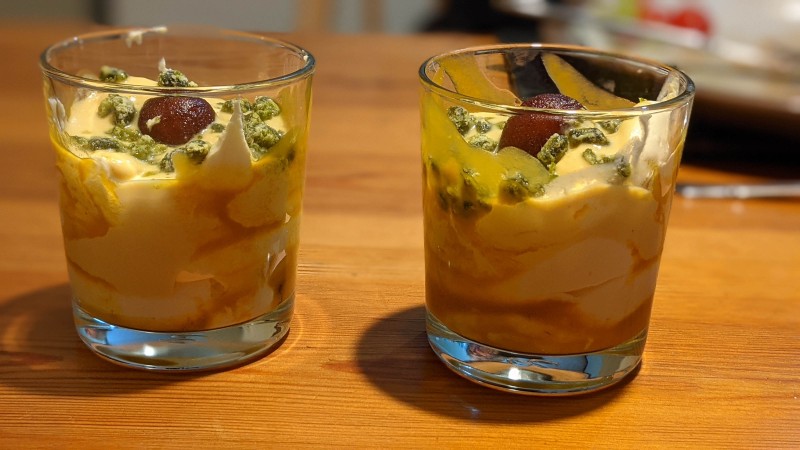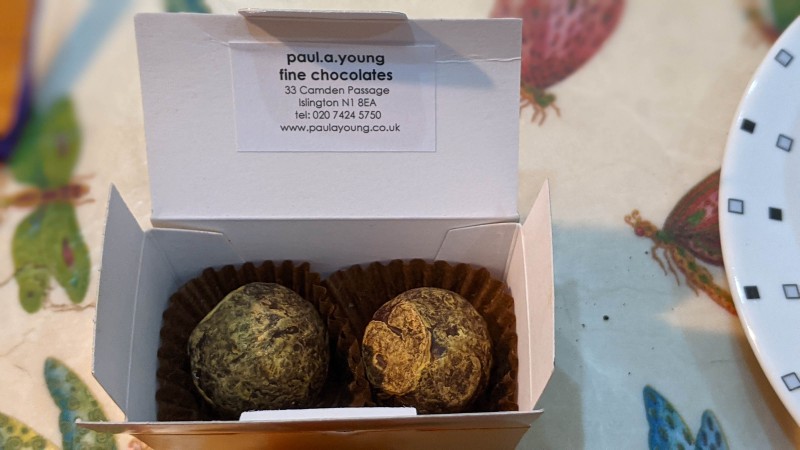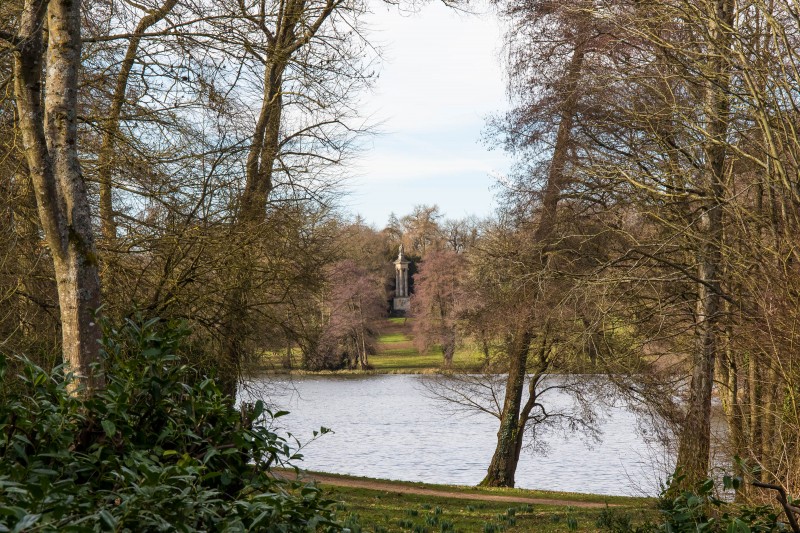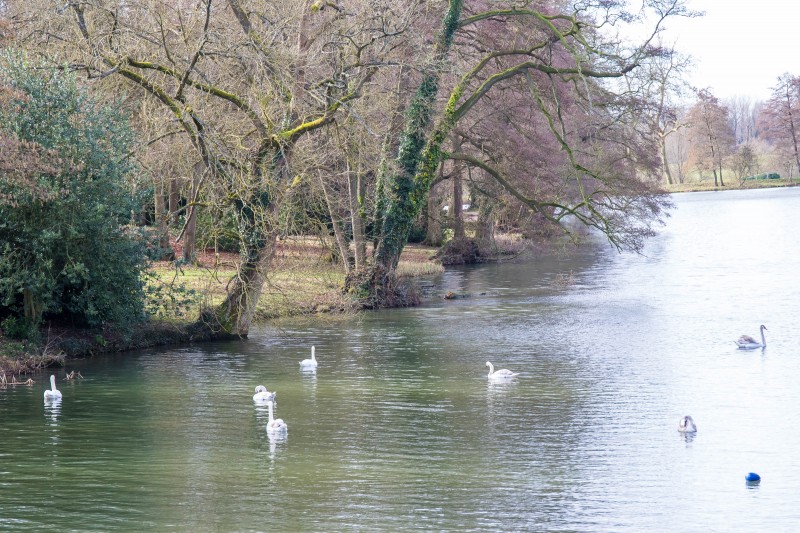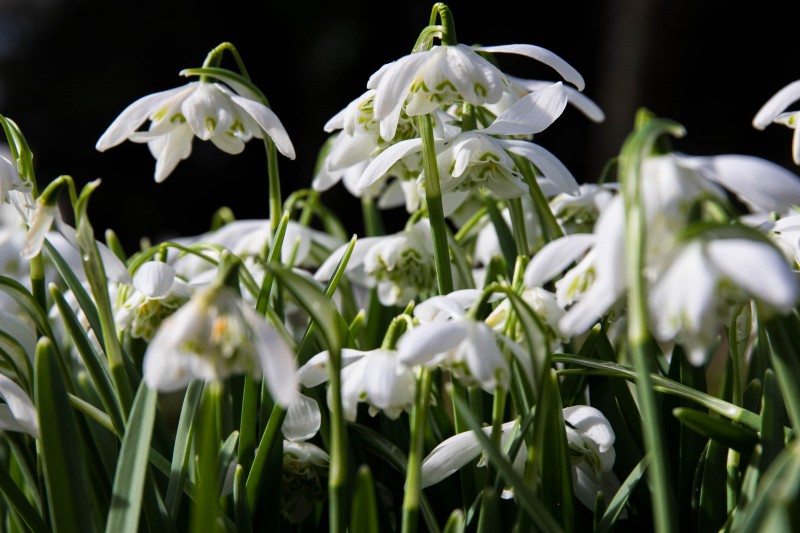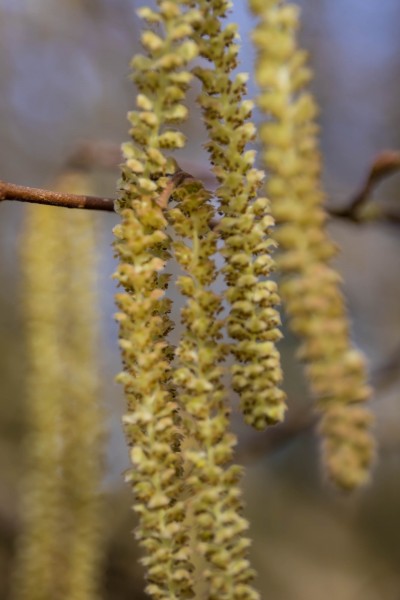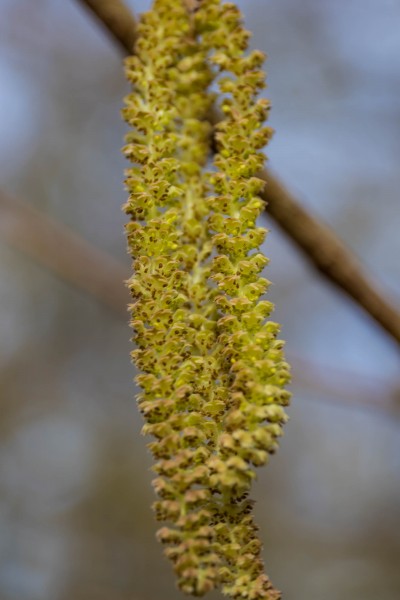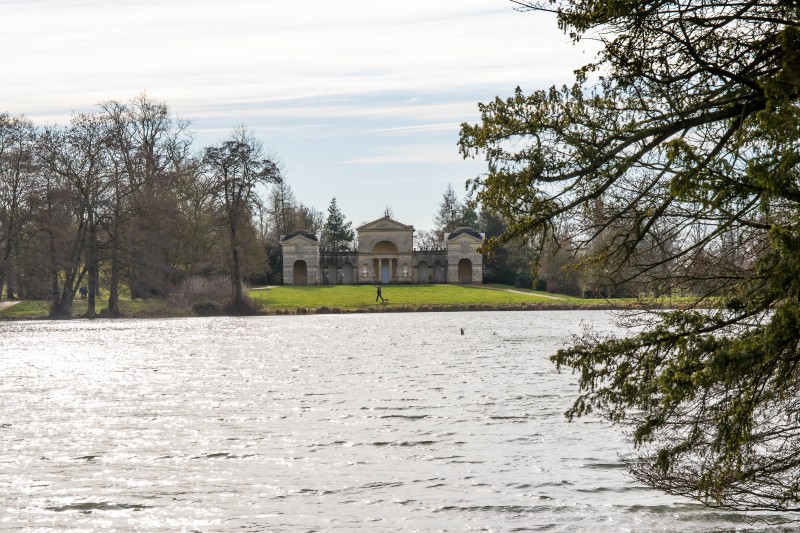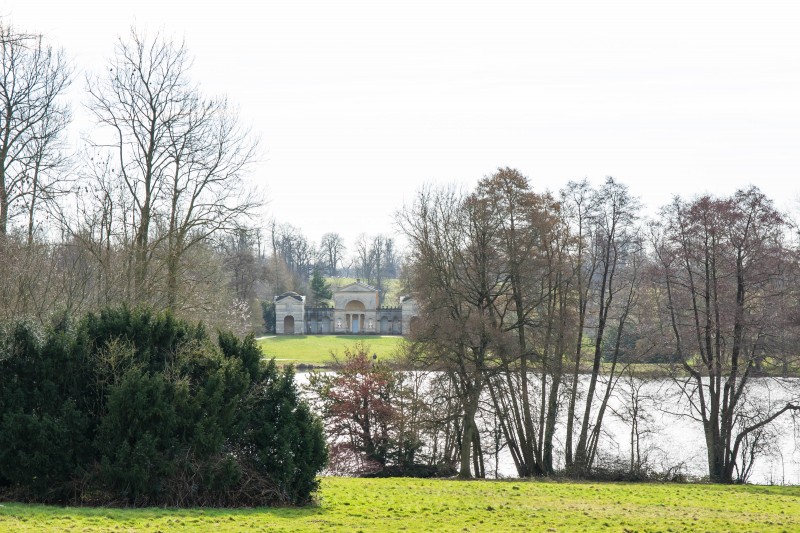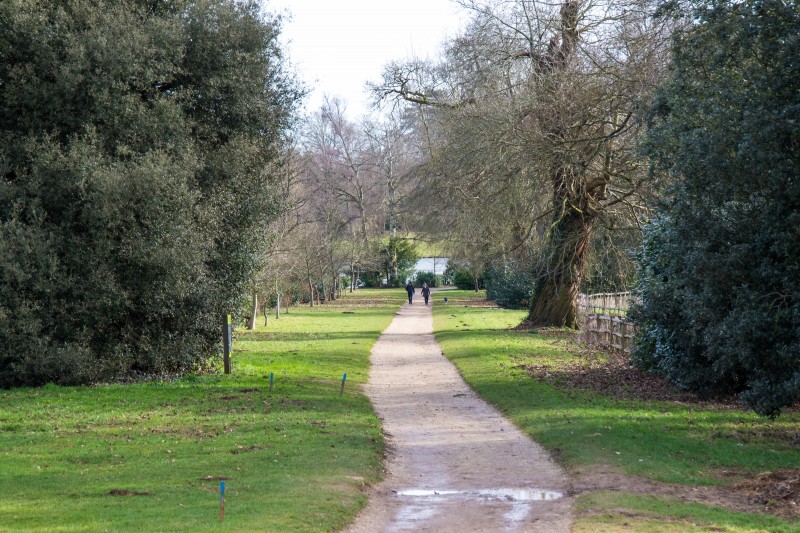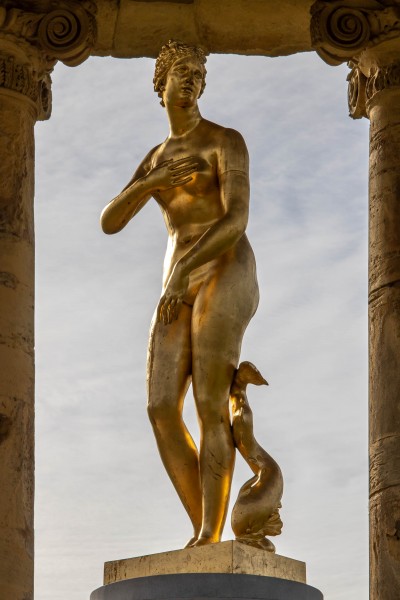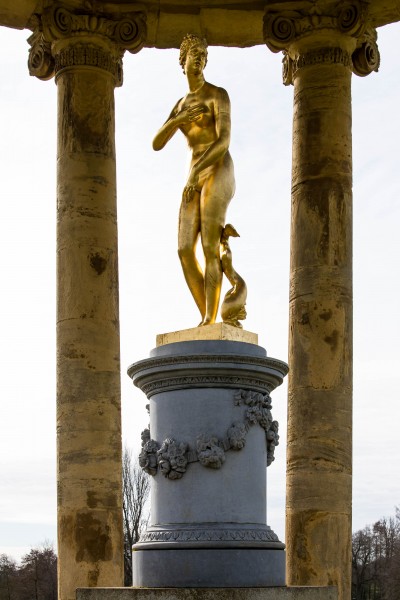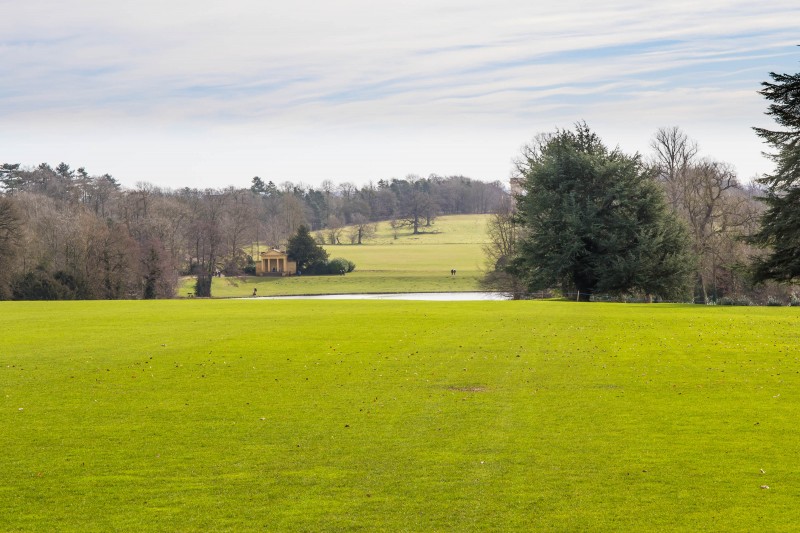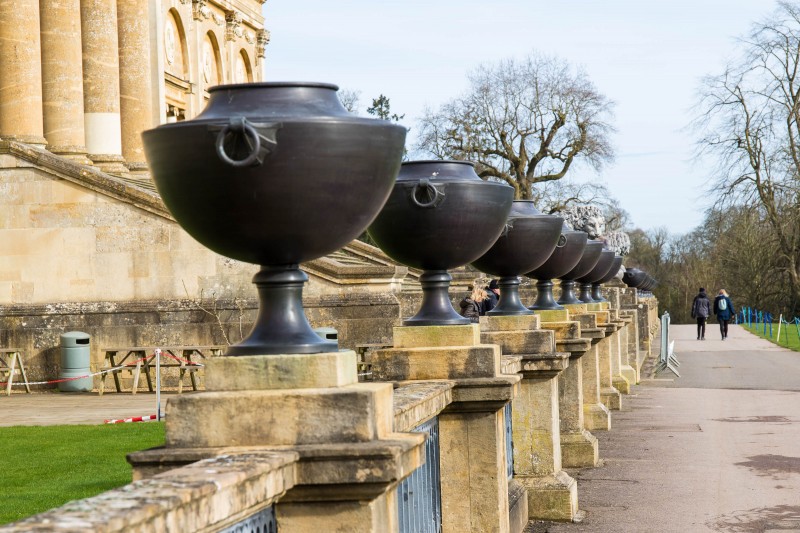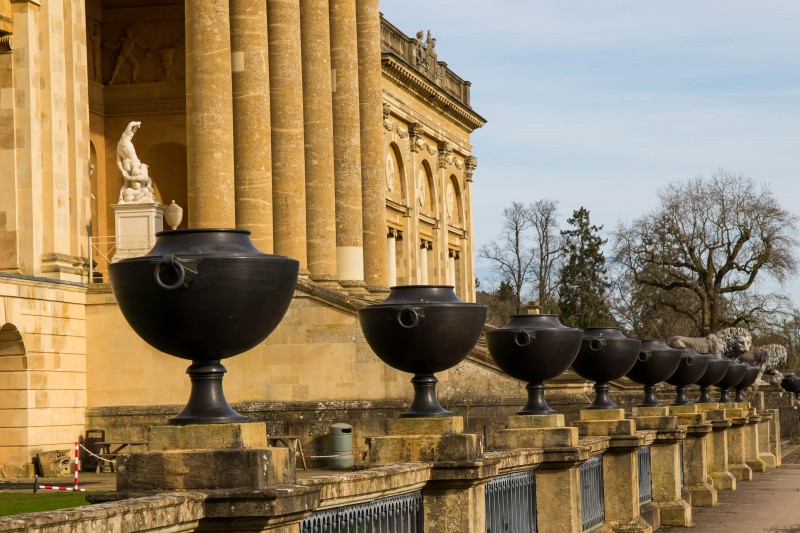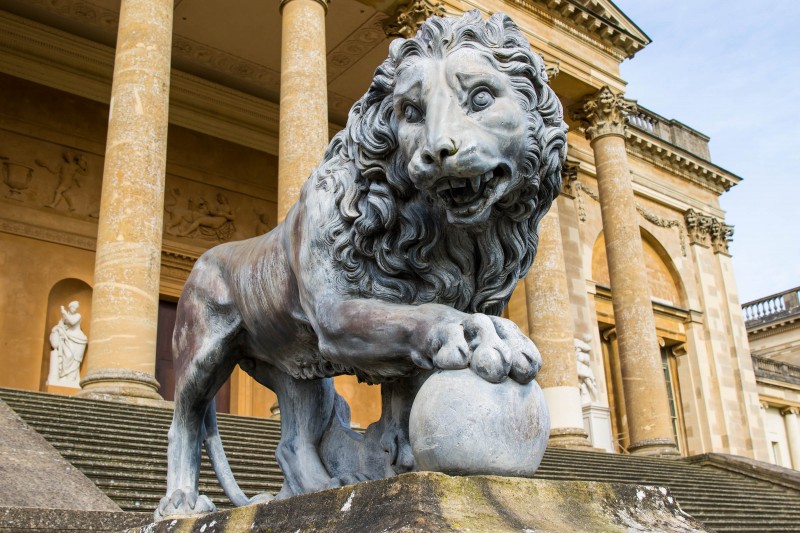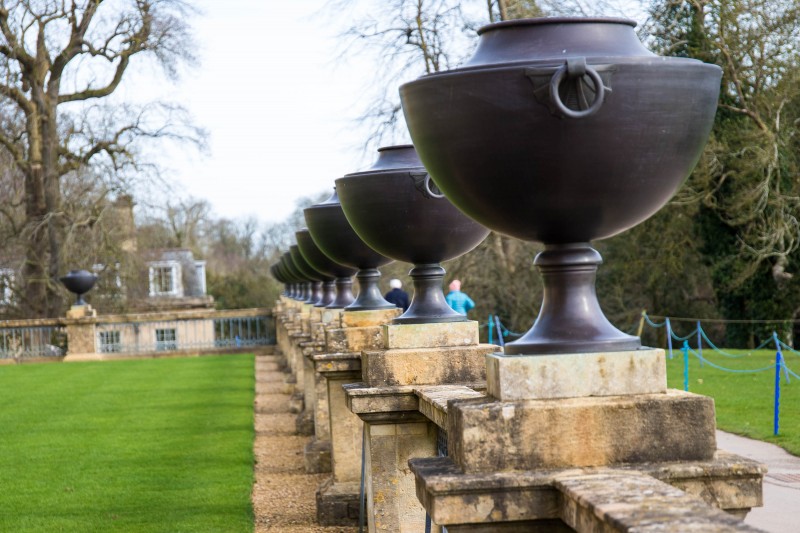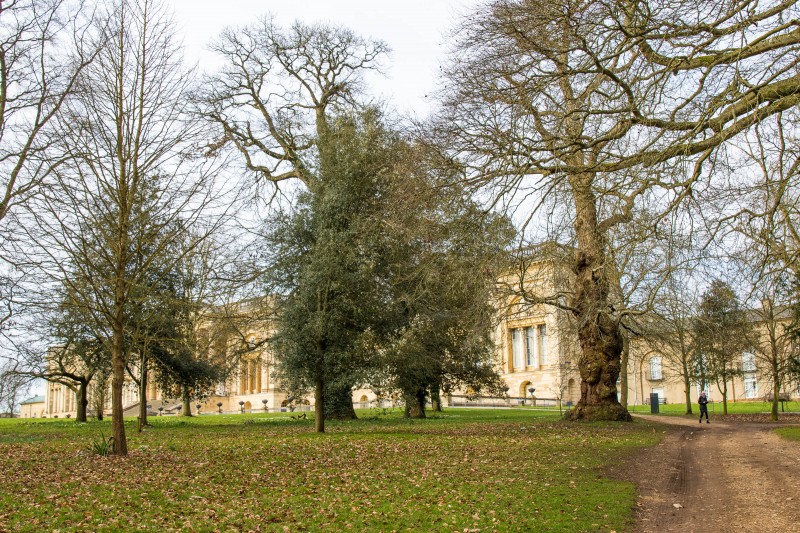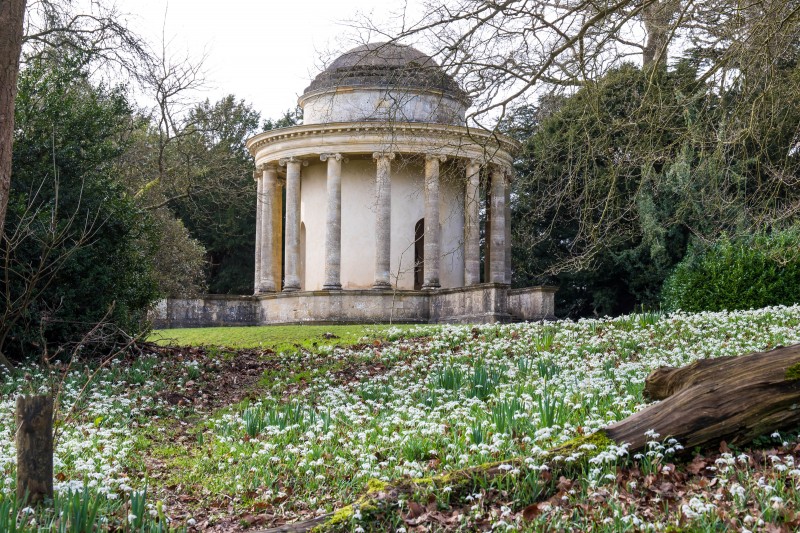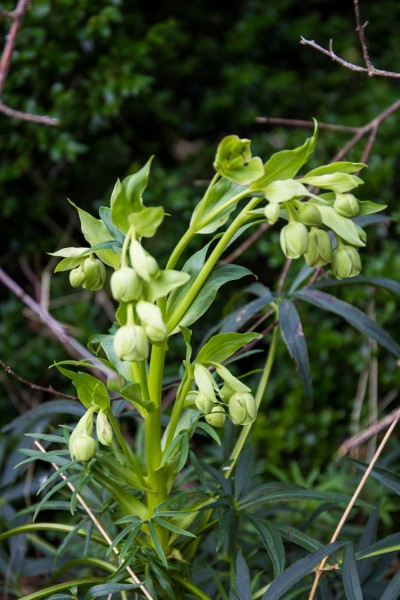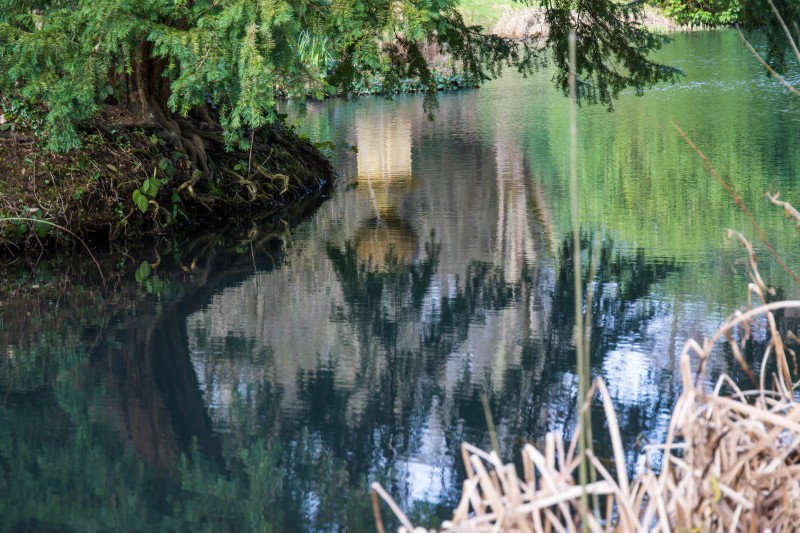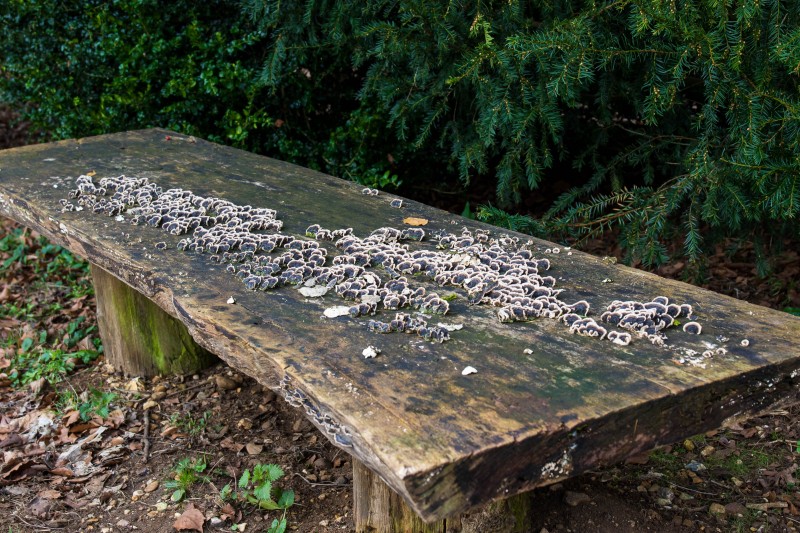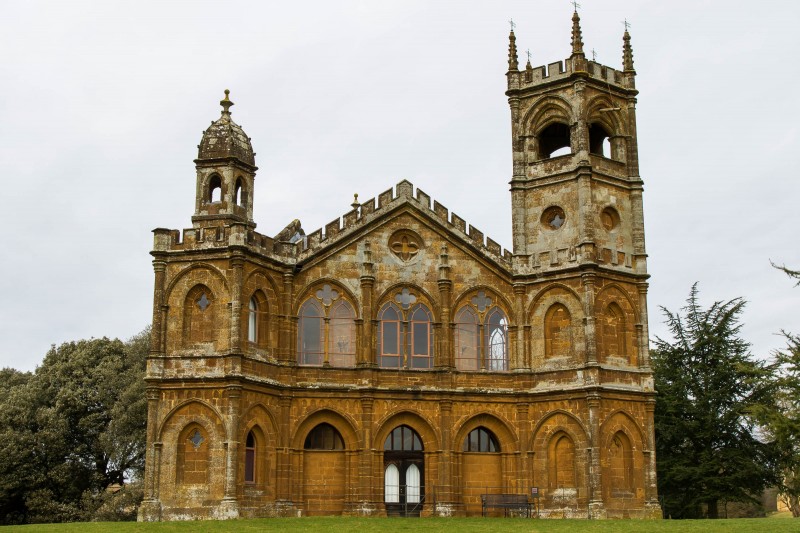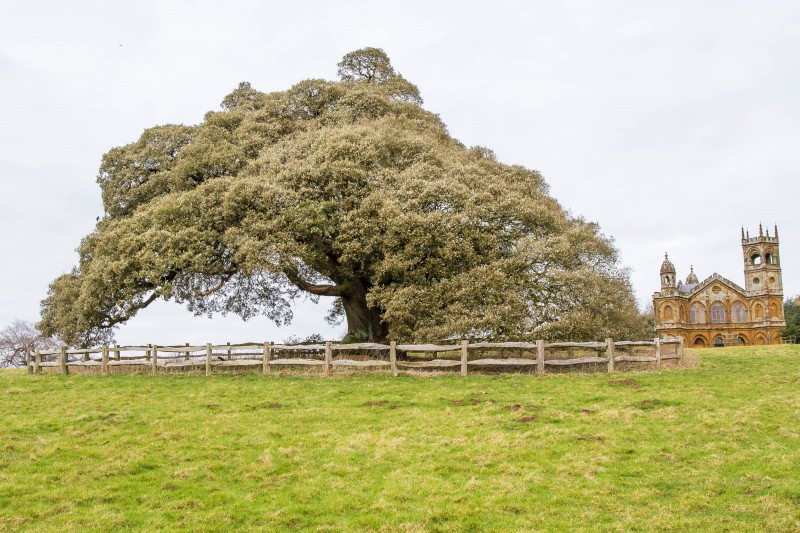The location is the field pond. A badger came to visit. You can see the badger trying to step onto the Willow Catkins floating on the pond surface. The bed of vegetation made the pond surface look solid, confusing the badger. The badger tries this a couple of times and then backs off. Next, you see the badger walking behind the pond, one slip and he is in for a dunking in the deepest section of the pond. He then makes his escape through the fence into the neighbouring field.
Kingswood in the Sun
Kingswood in the Sun
After weeks of cold, and then weeks of rain, the sun came out. I took the opportunity to photograph some country scenes to the North of our abode. Lets hope the sun continues to shine. The Spaniel in the picture is owned by the farmer on whose land I was walking, as are the sheep, pond and wool. These were taken during the golden hour.
The Secret Life of the Compost Heap X
The foxes are still about, coming and going along their garden tracks to the compost heap and beyond. After reports of foxes by our field pond, I set up the camera looking towards the most likely holes. This time we were rewarded with the sight of some fox cubs during the daylight and at night. They were only there that one day. After all the people looking around, the vixen very quickly moved her family off somewhere else.
The Secret Life of the Compost Heap VIIII
It has been a while since I posted a Secret Life of the Compost Heap video. The foxes and badgers are still about, coming and going along their garden tracks to the compost heap and beyond. This video shows the compost heap from two angles and one of the tracks on the way to the rabbit warren. The camera is now set for night time shooting only. During the day we would have hours of rabbits cavorting in the grass. As it is there is much-discarded footage of Oryctolagus cuniculus on the editing room floor.
There are now many live streaming youtube channels. For those who love their Vulpes vulpes and Meles meles, take a look at this Danish channel https://www.youtube.com/watch?v=qQZILMyW88o During the day is the gentle sound of running water and bird song. Very relaxing!
Perhaps more exciting is the Live Feed of the Iceland Volcano Eruption near Reykjavik
National Trust, Greys Court and the Polestar
R and I went for a trip to the National Trust house of Greys Court on a bright and sunny day. Today was a little warmer than we’ve been used to, so very pleasant. Yes more days without rain, but with a cool Northerly wind. The fields were very hard and dry. We visited to see the bluebells, unfortunately, they were not quite their best, but another week and they should be. The formal gardens were looking very pretty. We took a long slow walk across the fields to the bluebell woods, eating our Cornish Pasty lunch on some old decaying logs. Back at the house we managed our second cup of tea, served a great deal faster than our morning coffee.
This was also the longest trip in my new electric car. No need for range anxiety as the return trip was only 64 miles, giving an estimated range of 237 miles.
Spring Lamb
The weather has been dry, but cold for many days now. The fields have gone from sodden and waterlogged, to dry and hard. I can hear the farmers complaining about the lack of rain. A few days ago, I went for a short walk around the fields and the local wood to see the lambs and the blossom. The Akeman Inn was ready for the outside dining. Lots of covered areas and large umbrellas with tables. Not open on Sunday 11th, but ready to open on Monday.
Cinnamon Collection
A day of madness and extravagance during the lockdown. We ordered a takeaway from the restaurant chain Cinnamon. Not quite a takeaway, as it takes a day to deliver from London and requires finishing at home. This was a celebration of their 20years of existence. It arrived, and that evening we ate most of it. We were stuffed and never got to the afters. They were reserved for the next day. Extravagant, but really tasty. Not at all like a chicken vindaloo.
The Secret Life of the Compost Heap VIII
Over the last week, our fox has made regular visits to the compost heap come rabbit warren. The fox marked its territory as it left. It must have a route – it walks most nights on the prowl for food. Being a country animal, I suspect the fox has to work harder looking for food, no scraps are thrown out to feed on, it has to survive on fresh meat caught by its own guile and ingenuity.
I have yet to see a rabbit and fox in the same short segment of film. The rabbits certainly do know when to disappear. Thankfully, this fox has become less worried about the infrared light from the camera.
We did not see the fox this week. I hope he/she will be back (along with the polecat and a badger or two). We also had a visit by the night time cat prowler. We still don’t know where this beautiful cat comes from. Would we recognise it in the day time? The black and white infrared pictures make it hard to identify, although R thinks it’s a ginger tabby with white socks.
Stowe Gardens
Stowe Gardens during the third lockdown
After the cold and wet weather, we had a break with sun and a warm 12C temperature. We decided to go for a walk in the local area and drove over to Stowe Gardens. It is that time of year, Snowdrop season. R had booked our arrival time online a couple of days before. We arrived and walked down from the car park. The NT shop, restaurant and loos were of course closed. A small van was selling coffee and light lunches at the entrance. (We had already stocked up with Ginsters Cornish pasty from our local shop.)
A longish walk down the hill to the gardens, where our names were checked. The loos were here, a row of Portaloos. We enjoyed a three-hour walk, with a well-deserved lunch break of Pasty. The Snowdrops were somewhat a disappointment, there were clusters of them, but not the huge waves of them there were a few years back.
We met a man and wife taking pictures of the snowdrops with a background of the Temple of Ancient Virtue. He was using a 4×5 Walker Camera. I believe he could adjust the angle of the photographic plate to reduce converging verticles and change the plane of focus. At least he doesn’t have hundreds of images to choose from when doing his final edits.
The Secret Life of the Compost Heap VII
It has been several weeks since the last Secret Life of The Compost Heap post video. There has been a lack of subjects. I moved the camera to a new location for a week and recorded nothing but rabbits. Back at the compost heap, and the odd fox and badger. It was cold, so maybe they were keeping out of the cold, snuggled down somewhere.
After filming a few scenes of the rabbit hole, I repositioned the camera to look to the left of the rabbit hole where there is a wildlife path. Sure enough, badgers and foxes passed by. The foxes walking by and investigating the second entrance to the rabbit burrow. The foxes are rather camera-shy and can see the Infra-Red light. You can see one small fox being very hesitant. Alas, the Polecat has not been seen again. One domestic cat comes by regularly.
During the day one of our pheasants came by walking towards the bird feeders. You can see him run back a little later. Somebody must have opened the doorway to the house and scared him.
There is a short scene with a little field mouse. Cute.
